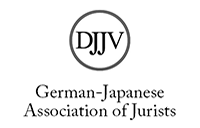Valuing Professional Japanese Baseball Players and the Role of Statistics, Economics, Culture, and Corporate Governance
Abstract
In the world of baseball, the 2011 season is unlikely to be remembered for achievement on the field. Instead, the year will be remembered for the offseason and the number of ‘mega deals’. Intense media coverage in Japan and the United States followed the transfer of pitching sensation Darvish Yu from the Hokkaido Nippon Ham Fighters in the Nippon Professional Baseball League (‘NPB’) to the Texas Rangers in Major League Baseball (‘MLB’). Texas paid a total of US$111 million for Darvish. Teams were also on the market. Tokyo Broadcasting System Holdings Inc sold the Yokohama Baystars Baseball Club Inc to technology company DeNA Co Limited. Meanwhile, in the United States, MLB experienced a frenzy of activity in the ‘free agent’ market. The biggest ‘free agent’ deal involved veteran St Louis Cardinals slugger Albert Pujols signing a 10-year deal for US$250 with the Los Angeles Angels of Anaheim. Yet the flow of money was not limited to players. The Miami Marlins signed manager Ozzie Guillen to a US$10 million deal and former Boston Red Sox general manager moved to the Chicago Cubs for a deal estimated at between US$10 and $15 million. The question is how players, managers, general managers and teams valued? This article will examine the valuation of Japanese professional baseball players.
After Nomo Hideo moved from the NPB to MLB’s Los Angeles Dodgers in 1995, the NPB quickly lost its monopoly over Japanese baseball labour. Consequently, a global market for professional Japanese baseball labour is emerging. Currently, the two major markets are the NPB and MLB. Yet the method in which teams value players in each competition is quite different, as are the salaries paid to players. Economics is common ly used in baseball to create valuation models. In their 2007 article titled ‘Bonuses and Biases in Japanese Baseball’, Professors J. Mark Ramseyer and Nakazato Minoru applied the ‘Chicago school’ of law to Japanese baseball. Their conclusion was that NPB players were paid their market value, or at least their Japanese market value. Yet there is no discussion by Professors Ramseyer and Nakazato of how markets, legal rules, culture (baseball and Japanese) or corporate governance shapes a player’s value and salary. The Society of American Baseball Research (‘SABR’) adopts a similarly narrow approach to assessing and valuing baseball players. Practitioners of SABR, known as sabermetricians, utilise mathematics and complex derivatives in an attempt to develop a rational and objective set of metrics to determine a baseballer’s value. Interesting, the ranks of sabermetricians are quickly being filled by economists and former Wall Street bankers.
This article argues that most efficient method to value a Japanese baseballer is not to exclusively rely on one methodology or one group of statistics. The modern game of baseball has evolved that limits the value of traditional statistics, while the overreliance on ‘new age’ statistics like sabermetrics can be equally dangerous. Such perils are demonstrated by the ongoing science project where sabermetricians constantly create new metrics designed to either assess or predict performance. Instead of a ‘one size fits all’ methodology to valuing a professional Japanese baseball player, this article proposes a multi-disciplined approach where the appropriate methodologies can be combined to value a player depending on the standard of competition they compete in, their experience and if the position they play. Such an approach is designed to provide insight into how Japanese baseball consistently produces professional players with skills that can be transferred into successful careers at a higher competitive level in the ‘major leagues’.
To begin, Part II will introduce readers to the basic structure of the NPB. This section will examine the player contract system in professional Japanese baseball and the role of ‘free agency’ and the United States-Japanese Player Contract Agreement 2000 (‘Posting Agreement’). Part III will analyse two competing models of player valuation: the ‘jock model’ and the ‘geek model’. The jock model examines how baseball coaches, managers and scouts value players. This model will be contrasted to the geek model, which includes traditional statistical valuation, the SABR valuation model and Ramseyer and Nakazato’s economic model. Also, this section will discuss the impact of Michael Lewis’ popular book and movie ‘Moneyball: The Art of Winning an Unfair Game’, where the central character was sabermetrics. Part IV will explore how Japanese culture and baseball culture shapes the value of Japanese ball players. Finally, Part V analyses the role of corporate governance in determining player value and salary. Value will be examined in the context of changes to lifelong employment in baseball, primarily through the transfer of Japanese players to MLB teams.






